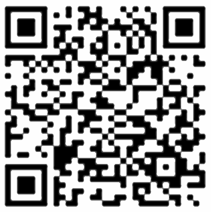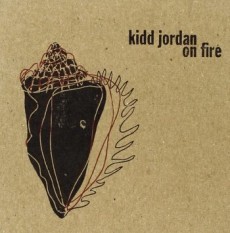
Daily Dose Of Jazz…
Kidd Jordan was born Edward Jordan on May 5, 1935 in Crowley, Louisiana and grew up listening to Zydeco and blues. His first instruments were C-melody and alto saxophones and while in high school he began performing stock arrangements for three or four saxophones with some older musicians. He read transcribed solos in Down Beat magazine, credits Illinois Jacquet with the idea of free improvisation and the free jazz of Ornette Coleman.
Kidd majored in music education and after completing his degree at Southern University in Baton Rouge, he relocated to New Orleans and began playing R&B gigs with Guitar Slim, Ray Charles, Big Maybelle, Big Je Turner, Gladys Knight, Aretha Franklin, Little Esther, Lena Horne and others. He taught at Southern University New Orleans from 1974 to 2006.
Jordan performs on tenor, baritone, soprano, alto, C-melody and sopranino saxophones as well as contrabass and bass clarinets. He has recorded with a wide selection of musicians in styles ranging from R&B to avant-garde jazz, including Stevie Wonder, Archie Shepp, Fred Anderson, Ellis Marsalis, Ornette Coleman, Cannonball Adderley, Ed Blackwell and Cecil Taylor on the short list.
Jordan taught Donald Harrison and Branford Marsalis, and Charles Joseph the co-founder of the Dirty Dozen Brass Band. He was an instructor at the New Orleans Center for Creative Arts, and suffered the loss of his home and possessions during Hurricane Katrina. He recorded his album Palm of Soul shortly afterwards, that has had a track featured on the TV series Treme as well as making a guest appearance. The multi-instrumentalist continues to perform and teach.
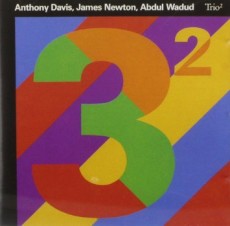
Daily Dose Of Jazz…
Abdul Wadud was born Ronald DeVaughn on April 30, 1947 in Cleveland, Ohio. The son of R&B singer Raheem DeVaughn, he took up the cello and concentrated solely on the instrument from the age of nine, and never decided to double on bass.
Abdul studied at Youngstown State and Oberlin in the late ’60s and early ’70s. He played in the Black Unity Trio at Oberlin, met Julius Hemphill and the two subsequently worked together well through the Eighties. He has performed with the New Jersey Symphony Orchestra in the ’70s, earned his master’s degree in 1972, and then in 1976 played with Arthur Blythe for the first time and has maintain a working relationship.
He also worked and recorded with Frank Lowe, George Lewis, Oliver Lake, Sam Rivers, Cecil Taylor, David Murray, Chico Freeman, Anthony Davis and James Newton. Along with Newton and Davis they performed as a trio and were also a part of the octet Episteme from 1982 to 1984. Abdul recorded and in a duo with Jenkins for Red in the ’70s and as a leader for Bishara and Gramavision in the ’70s and ’80s. He has been a member of the Black Swan Quartet, Human Arts Ensemble, Julius Hemphill Quartet and Muhal Richard Abrams Orchestra.
His plucking and bowed solos have been featured in jazz and symphonic/classical settings, he is easily considered the finest cellist to emerge from the ’60s and ’70s generation, playing in both jazz and classical settings. Cellist Abdul Wadud transitioned on August 10, 2022 in Cleveland, Ohio at the age of 75.
More Posts: cello

Daily Dose Of Jazz…
George Rufus Adams was born on April 29, 1940 in Covington, Georgia and his musical style is deeply rooted in the blues and in primarily that of African-American popular music. The tenor’s greatest influences seem to have been Rahsaan Roland Kirk and the adventurous edginess of John Coltrane and Albert Ayler.
George played with tremendous intensity and passion, as well as lyricism and subtlety. At times he bent over backwards when playing, almost ending up on his back. He and Don Pullen shared a musical vision and their quartet straddled the range from R&B to the avant-garde.
One of Adams’ last recordings was America for Blue Note Records consisting of classic American songs like Tennessee Waltz, You Are My Sunshine and Take Me Out To The Ballgame as well as a few original songs that articulate his positive view of his country and the gifts it had given him. It also includes The Star Spangled Banner and America The Beautiful.
Tenor saxophonist, flautist and bass clarinetist George Adams, best known for his work with Charles Mingus, Gil Evans, Roy Haynes, and in the quartet he co-led with pianist Don Pullen, passed away on November 14, 1992 in New York City.
He was also known for his idiosyncratic singing he left for posterity two-dozen albums as a leader and another 25 as a sideman over the course of his sort career.
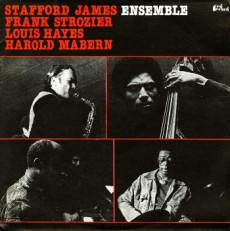
Daily Dose Of Jazz…
Stafford James was born April 24, 1946 in Evanston, Illinois. As a young man he enlisted in the Air Force and after his discharge he studied at the University of Chicago. In 1969 he moved to New York City and studied at the Mannes College for Music. Here he met Pharoah Sanders, with whom he played his first jazz concerts in New York. He played with Monty Alexander, Sun Ra, Alice Coltrane and Albert Ayler.
James did the first road tour of the Broadway show Hair through Canada, met Melba Moore in 1971 and played the David Frost Revue with her, and went on to Rashied Ali, Roy Ayers, Al Haig, Barry Harris, Andrew Hill, Andrew Cyrille and Chico Hamilton.
In 1973 Stafford toured Europe for the first time with Gary Bartz, then became a member of Art Blakey’s Jazz Messengers. At the same time he met Woody Shaw, began a lifelong friendship with Betty Carter and started teaching at the United Nations International School in NYC. He recorded his debut album as a leader in 1975 with Enrico Rava, Dave Burrell and Beaver Harris. A year later he founded a quintet and toured Europe.
He met Dexter Gordon while on tour with Al Cohn and recorded Homecoming with him upon his return to the United States. He continued to tour through the 1980s, arranged compositions by Ellington, and composed sonatas. By the end of the decade and into the next James moved to Paris, collaborated with Pharoah, Barney Wilens and Lavelle, formed the Stafford James Project, played with his trio and continued to compose for large ensembles.
His list of collaborations, recording sessions and tours is extensive and in recent years he has recorded The Stafford James String Ensemble, taught master classes at the university level, had a two-hour program on his life and compositions, founded the Top Hat Music Society, performed with Max Roach’s percussion ensemble M’Boom and continue his tradition of performance, composing, recording and touring around the world.
More Posts: bass
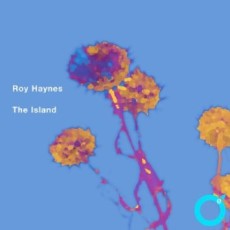
Daily Dose Of Jazz…
Roy Haynes was born in Boston, Massachusetts on March 13, 1925, and was keenly interested in jazz ever since he can remember. Primarily self-taught, he began to work locally in 1942 with musicians like guitarist Tom Brown, bandleader Sabby Lewis, and Kansas City blues-shout alto saxophonist Pete Brown. In the summer of 1945 he got a call to join bandleader Luis Russell to play for the dancers at New York’s Savoy Ballroom. When not traveling with Russell, the young drummer spent much time on Manhattan’s 52nd Street and uptown in Minton’s, the incubator of bebop.
From 1947 to 1949 Haynes was Lester Young’s drummer, worked with Bud Powell and Miles Davis in ’49, became Charlie Parker’s drummer of choice from 1949 to 1953, toured the world with Sarah Vaughan from 1954 to 1959, did numerous extended gigs with Thelonious Monk in 1959-60. Through the Sixties he performed and recorded with Eric Dolphy, Stan Getz, John Coltrane, has collaborated with Chick Corea since 1968, and with Pat Metheny during the ’90s. He’s been an active bandleader from the late ’50s to the present, featuring on his recordings Phineas Newborn, Booker Ervin, Roland Kirk, George Adams, Hannibal Marvin Peterson, Ralph Moore and Donald Harrison to name a few.
A perpetual top three drummer in the Downbeat Readers Poll Awards, he won the Best Drummer honors in 1996 (and many years since), and in that year received the prestigious French Chevalier des l’Ordres Artes et des Lettres and in 2002 his album “Birds Od A Feather” was nominated for a Grammy. Roy Haynes, percussionist, composer and bandleader nicknamed Snap Crackle, continues to compose, performer, record and tour.
More Posts: drums,percussion


